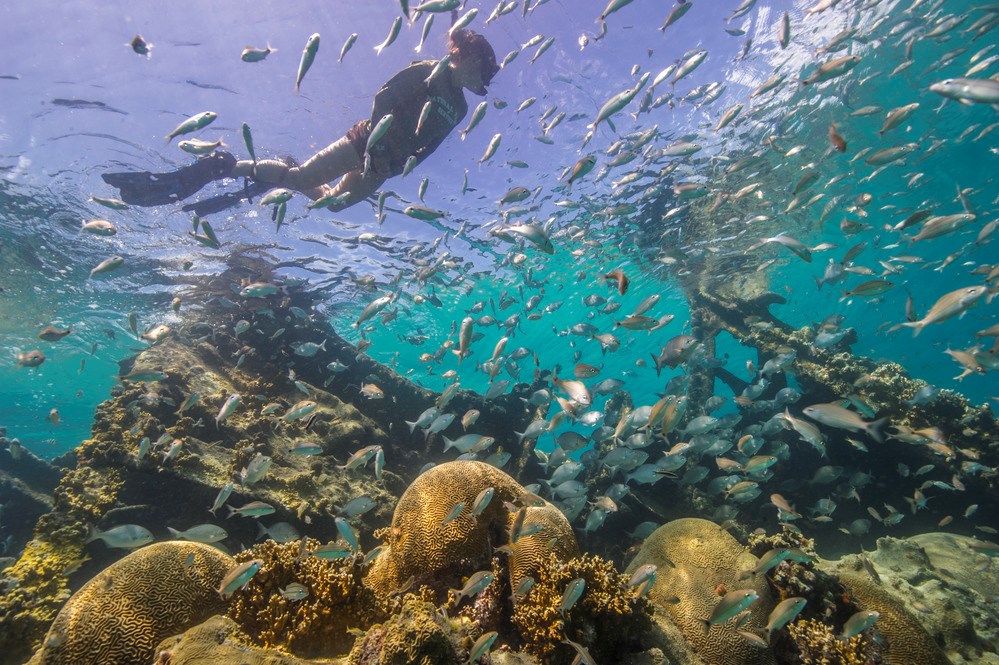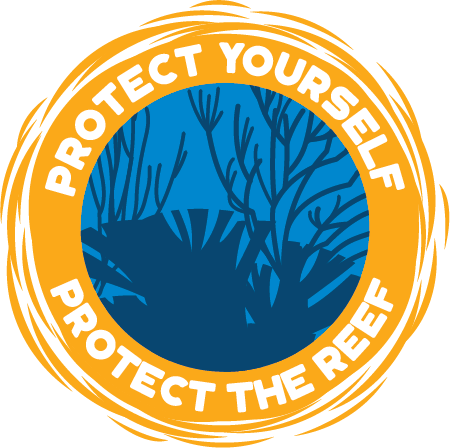Article
Protect Yourself, Protect the Reef

Dry Tortugas National Park
Are you preparing for a beach getaway full of swimming, sandcastles, and picturesque sunsets? As you pack your beach bag with snorkel masks and beach towels, don’t forget this essential item for a safe and enjoyable ocean vacation—sun protection. Sun protection should always be a top priority, but it’s even more important while visiting the beach:
-
the sun’s rays intensify as they reflect off the sand and water,
-
bathing suits typically expose more skin, and
-
swimming, sweating, and toweling off remove sunscreen applications.
However, your skin isn't the only thing to protect when you visit coastal parks this summer. Your sun protection choices can also affect the beautiful coral reefs. More than 1 million people jump in the ocean to explore coral reefs in national parks every year, and the sunscreen they apply washes off into the water and over the coral. Sunscreens that include the ingredients oxybenzone, octinoxate, and avobenzone, can harm coral reefs, leading to coral bleaching and adverse effects of reef reproduction. And unfortunately, through water sampling around coral reef sites, the National Park Service has detected high concentrations of some of these harmful chemicals. You can protect yourself and the reef by making a few simple choices.

Reef-Friendly Sun Protection Tips
Quick tip: Look for sunscreens with only zinc oxide or titanium dioxide!
Sunscreen comes in two main types: physical sunscreens and chemical sunscreens. Reef-friendly sunscreens are physical sunscreens that contain minerals that physically block harmful rays from the sun. The ingredients zinc oxide and titanium dioxide are found in mineral-based sunscreens. Chemical sunscreens use synthetic compounds that absorb UV rays from the sun before they reach the skin. Ingredients to avoid when shopping for sunscreen products are the synthetic chemicals oxybenzone, octinoxate, and avobenzone. Sunscreens with the label “reef-friendly” may still include ingredients that can harm corals. Always look at the label and select sunscreens with only zinc oxide or titanium dioxide.
You can also protect yourself from the sun by wearing UV-rated clothing like a swim shirt or rash guard. Protective clothing, umbrellas, and avoiding the sun when it’s highest in the sky between 12 pm and 2 pm can protect you from the sun’s intense rays and keep harmful chemicals out of the ocean.
By adopting an environmentally mindful sun protection routine, you protect yourself from the sun's harmful rays while helping the National Park Service protect the spectacular but fragile coral reef ecosystem below the ocean's surface. Colorful coral reefs are home to an enormous diversity of species. Healthy coral reefs found in our national parks attract visitors from around the world, and the National Park Service works hard to monitor the health and natural processes of coral reefs and educate people about the value of our reef ecosystems.
Join the National Park Service by choosing skincare that protects you and the reef.
